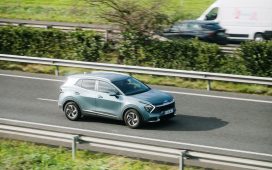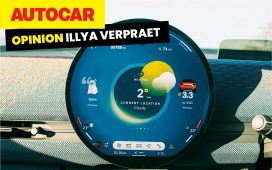The Biden administration has proposed new rules that would in effect prohibit Chinese-made vehicles from US roads after a months-long investigation into software and digital connections that could be used to spy on Americans or sabotage the vehicles.
The proposed rules come as Chinese automakers become more powerful in global markets, exporting a flood of high-tech vehicles and posing new challenges to western manufacturers, with governments fearing that installed sensors, cameras and software could be used for espionage or other data collection purposes.
Chinese-made vehicles aren’t yet widespread on US roads but are becoming more common in Europe, Asia and other markets.
The new rules, described as a national security action coming out of the US chamber of commerce, focus on Vehicle Connectivity System (VCS) and software integrated into the Automated Driving System (ADS).
“Malicious access to these systems could allow adversaries to access and collect our most sensitive data and remotely manipulate cars on American roads,” the department said in a statement on Sunday.
It added: “Certain technologies originating from the PRC or Russia present an undue risk to both US critical infrastructure and those who use connected vehicles.”
US secretary of commerce Gina Raimondo said Chinese- or Russian-made in-vehicle cameras, microphones, GPS tracking and other technologies connected to the internet posed a “very real” threat to US drivers.
“It doesn’t take much imagination to understand how a foreign adversary with access to this information could pose a serious risk to both our national security and the privacy of US citizens,” Raimondo said.
“The reality is that cars today, or what we call connected vehicles, are connected to the internet, GPS, homes, microphones, cameras and sensors that can monitor what you do, where you go and what you say … and that comes with new risks.”
Software built by foreign adversaries can be used for surveillance and remotely-controlled, which threatens the security and safety of Americans on the road.
“In an extreme situation a foreign adversary could shut down to take control of all their vehicles operating in the US all at the same time, causing crashes, block roads etc,” Raimondo said.
The new rules prohibit car manufacturers from selling cars in the US with important components or software from China and Russia that communicate externally as well as autonomous driving systems.
The move is characterized as a national security action and not an an issue of trade. The US said that it was acting now to deter any national security threat before Chinese -made or Chinese technology-equipped connected vehicles are on US roads.
after newsletter promotion
The crackdown could mirror the long-running UK, US and European crackdown on Chinese telecom giant Huawei, fearing undue Chinese influence on infrastructure security. Huawei has accused the US and western allies of using the cover of national security to fend off competitive challenges.
But the US crackdown on Chinese connected or equipped vehicles comes as US automakers have expressed alarm that Chinese-made electric vehicles, including some that cost as little as $10,000, also pose a competitive threat in the new electric vehicle market.
When Biden announced the investigation earlier this year into the issue of car-borne Chinese surveillance, he stressed his desire to protect US automakers. “With this and other actions, we’re going to make sure the future of the auto industry will be made here in America with American workers,” he said.
On Sunday, US national economic advisor Lael Brainard said that without the new rules foreign adversaries could “take advantage of vulnerabilities” and leverage the integrated nature of connected vehicles to engage in “surveillance or potential sabotage here on American soil”.
White House national security adviser Jake Sullivan said the administration had identified a range of national security risks associated with connected vehicles.
“We’ve already seen ample evidence of the PRC pre-positioning malware on our critical infrastructure for the purpose of disruption and sabotage. And with potentially millions of vehicles on the road, each with 10- to 15- year lifespans, the risk of disruption and sabotage increases dramatically,” he said.










